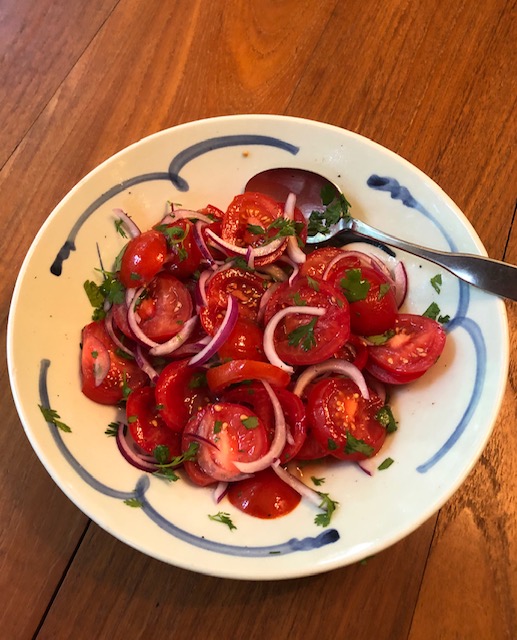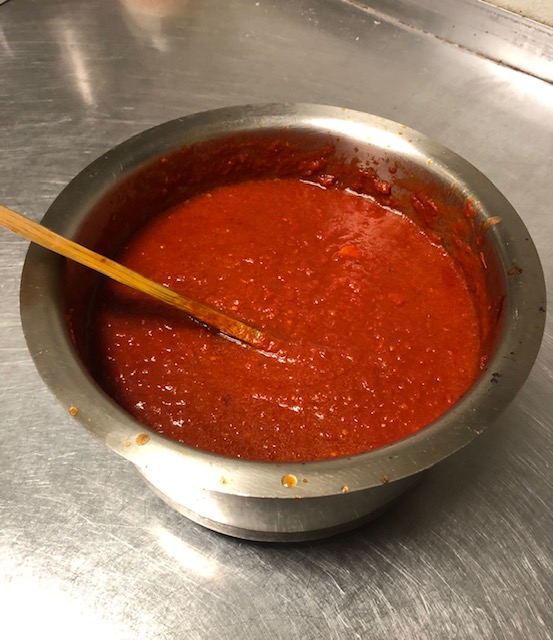Fresh Tomato Chutney (Tamatar Chatni)
The secret is the freshest, ripest, sweetest tomatoes available at the time, whether locally grown regular ones, good Roma tomatoes or cherry, grape, or “Campari” tomatoes.
The recipe serves six to eight as a condiment.
1 pound
fresh, ripe tomatoes
1/2 small
red onion
1/2 of a
medium-sized bunch of cilantro
1/2
teaspoon salt
A generous
sprinkle of freshly ground black pepper
A generous
sprinkle of cayenne
Juice of 2 medium limes
For regular or Roma tomatoes, cut out the cores, then cut lengthwise into 1/2-inch wide wedges For smaller tomatoes, halve the lengthwise or slice 1/4-inch thick. Place tomatoes in a bowl.
Place cut side of peeled, halved red onion on a board. Slice lengthwise into very fine julienne, and add to the tomatoes. Cut leaves off cilantro, chop the very coarsely, and add it to the bowl. Half an hour before serving, add salt, seasonings and lime juice.
Stir
carefully but thoroughly. Let sit ten minutes. Mix again, then taste. Add salt
and/or lime juice to taste. Let sit at least a few more minutes. Stir again
just before serving.
















